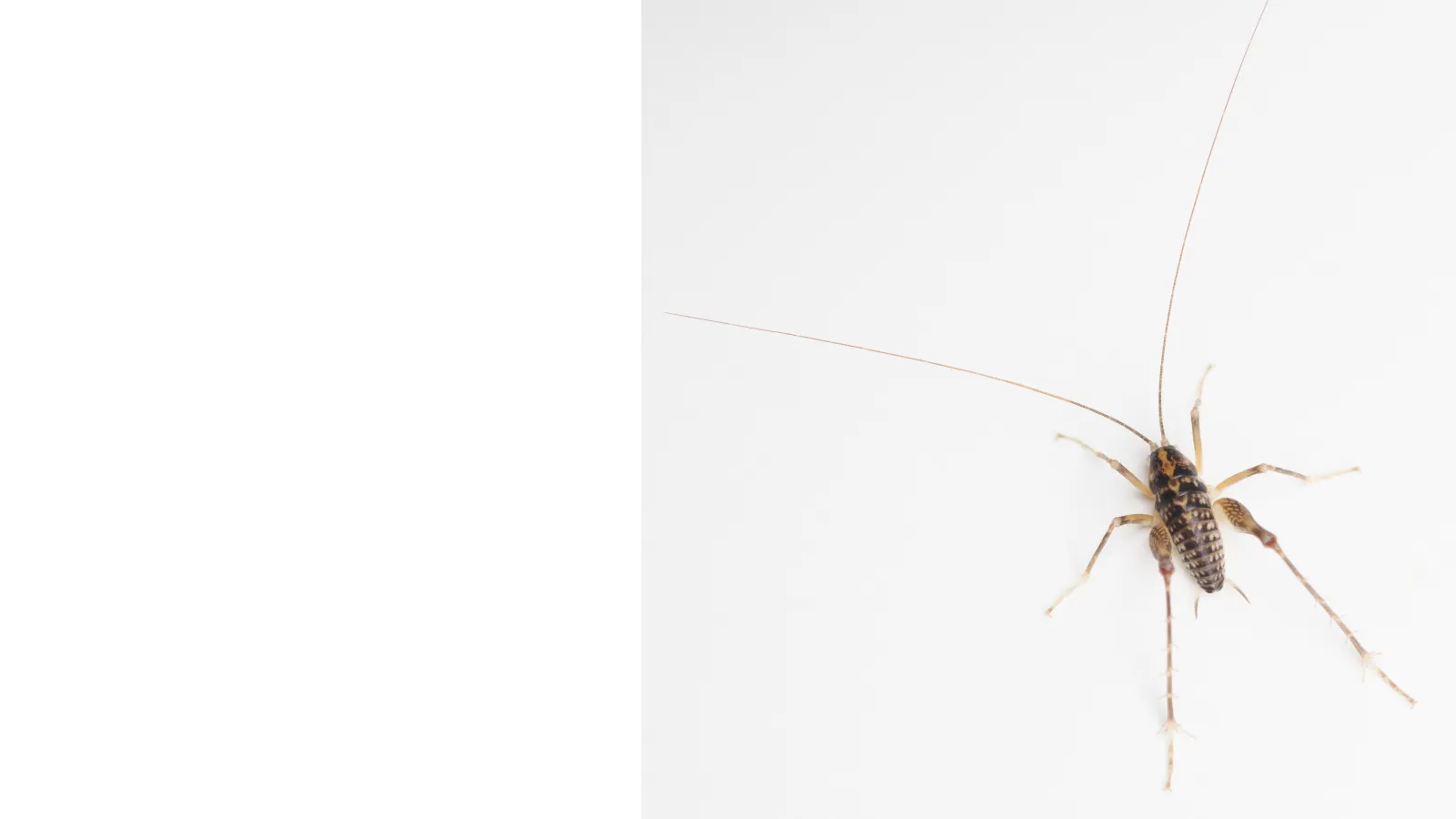
Camel Crickets
Latin Name: Rhaphidophoridae
Camel crickets come from the Rhaphidophoridae family and get their name from their humped backs. These crickets have very large hind legs, which they use to jump away when frightened. Unlike other species of crickets, camel crickets do not have wings or sound-producing organs, so their jumping capabilities are the only defense they have against predators. Adult camel crickets can grow up to 1 ½ inches and are light to dark brown.
These crickets are found throughout the world and in all regions of the United States. They prefer to live outside, rather than in your home, and you will find them in caves, underneath damp leaves or stones, and within rotting logs. Camel crickets need cool, moist environments to thrive, which means that they may move indoors when it gets too hot and dry outside.
Camel crickets are harmless to people, but they can be destructive. Since camel crickets have no fangs and cannot bite, they pose no threat to humans in this regard, but their other dietary habits can be troublesome. In addition to insects and even other camel crickets, these insects will also eat cardboard, carpet, fabrics like curtains, and sometimes clothing.
To reduce the threat of a camel cricket invasion, there are a few changes you can make around your home. The first plan of action is usually to seal up their points of entry. Replace damaged weather stripping, seal cracks at the base of your home, and be cautious of leaving garage doors open for extended periods. Camel crickets and many other pests thrive in moist environments, so reduce moisture where you can, keep your attic and basement well-ventilated, and invest in a dehumidifier if necessary. Firewood should also be stacked at least 30 feet from your home and inspected before being moved indoors. For more information on pest control or to schedule a free pest inspection, contact Palmetto Exterminators.
Similar Pests: Crickets, Mole Crickets